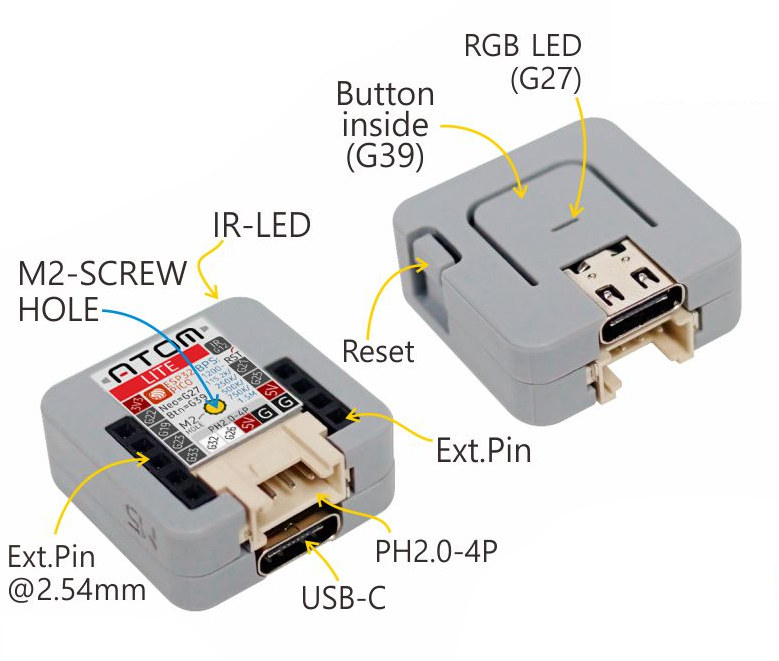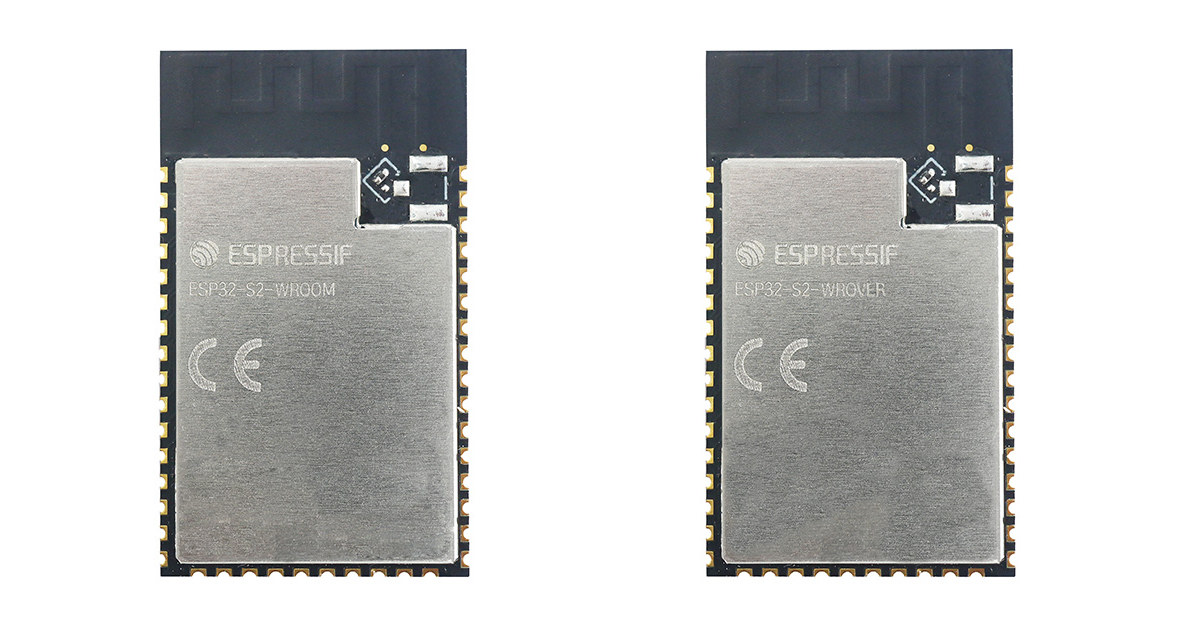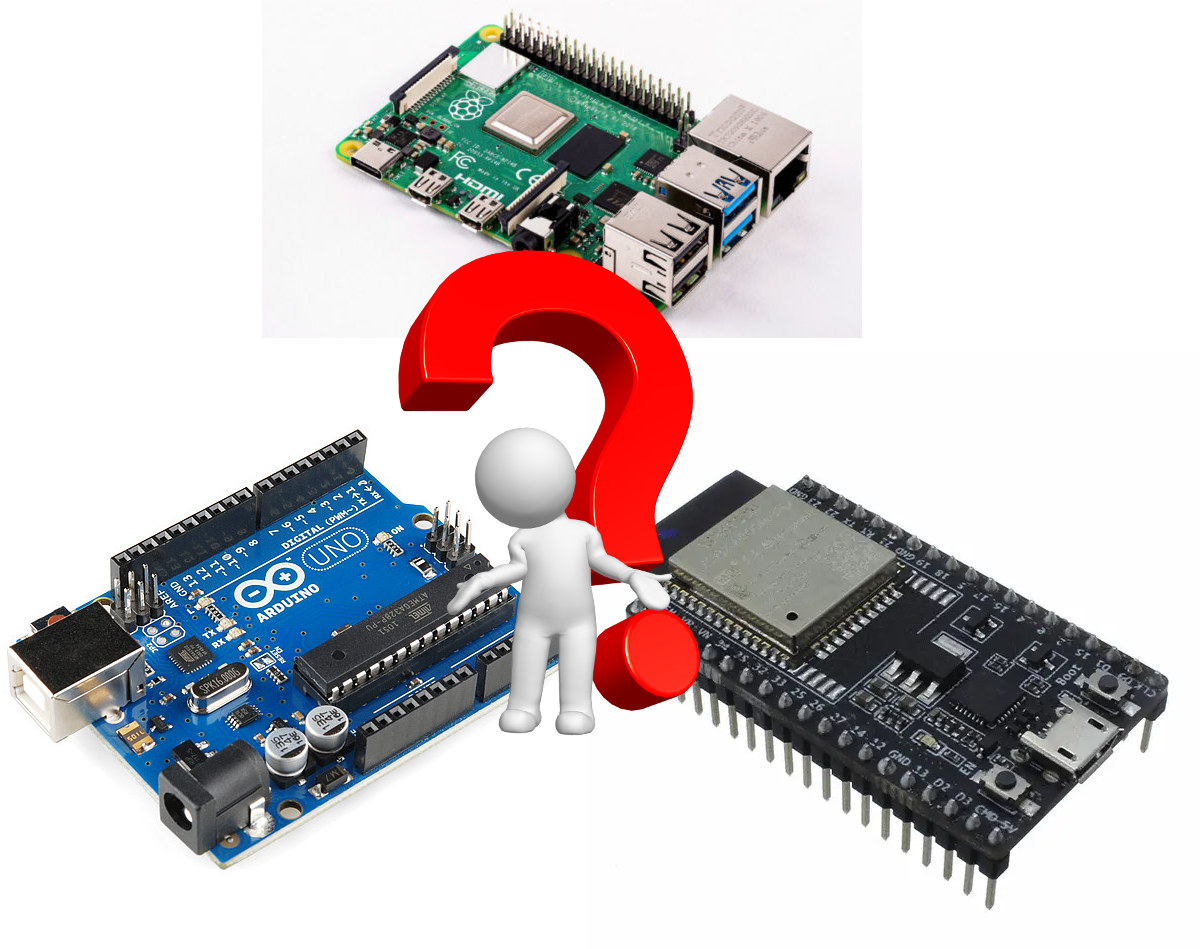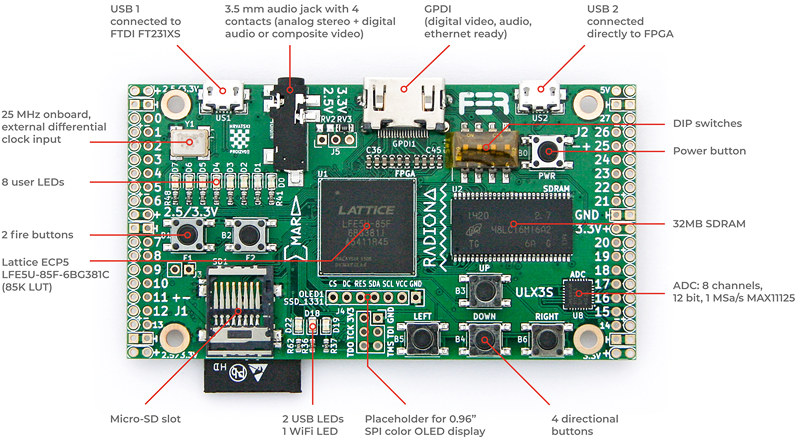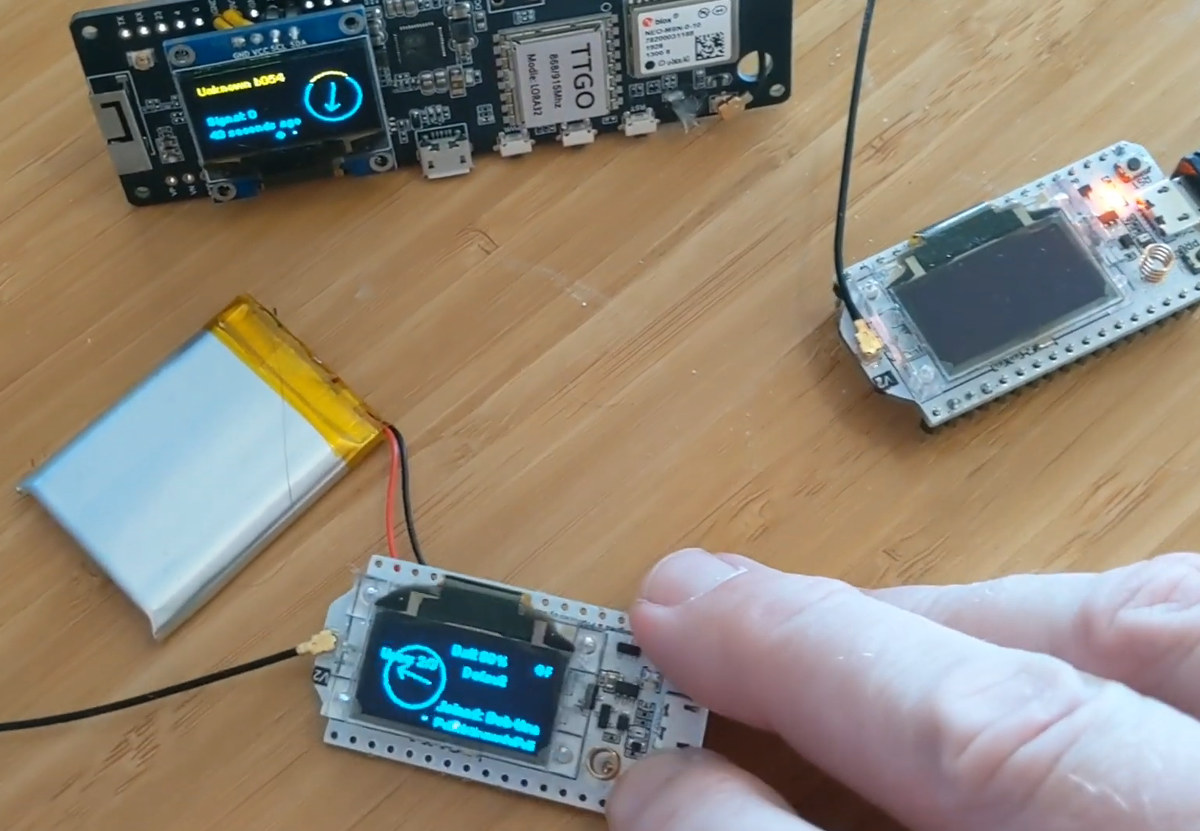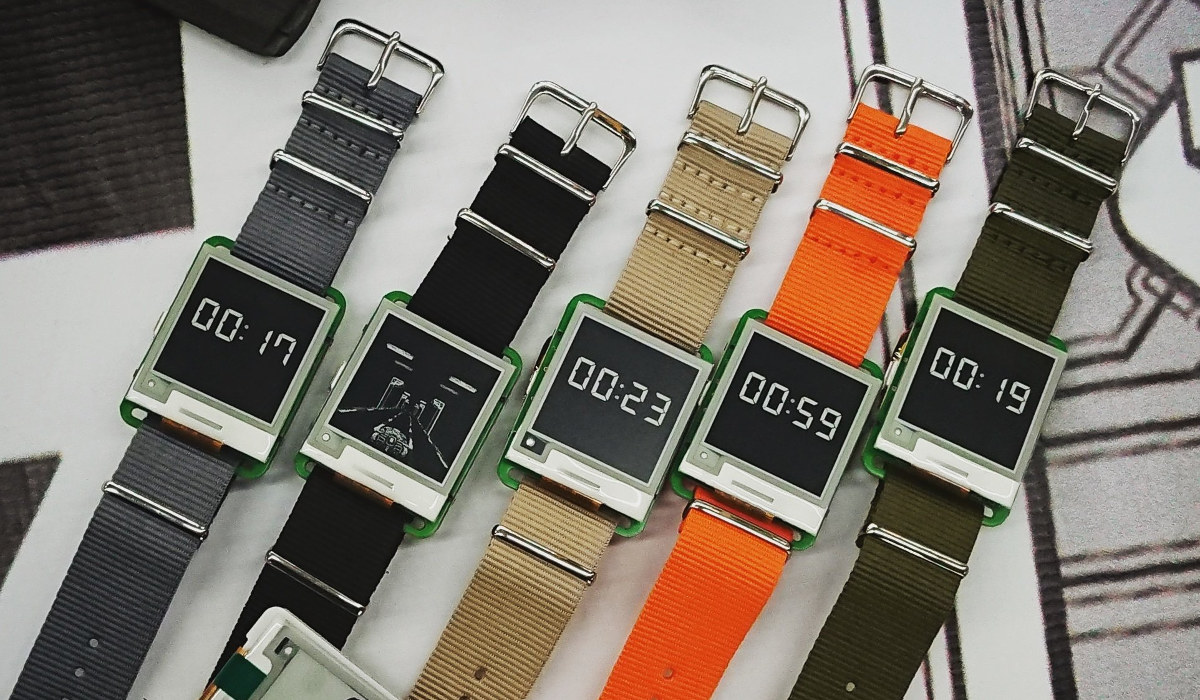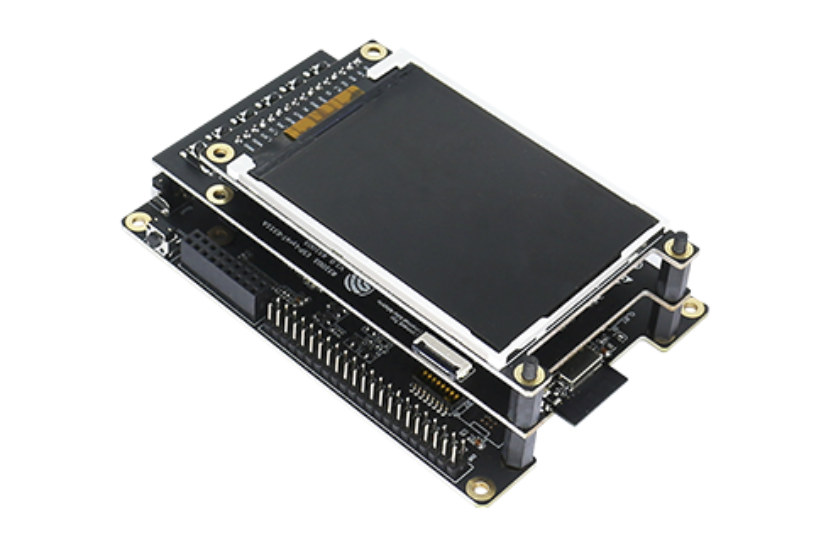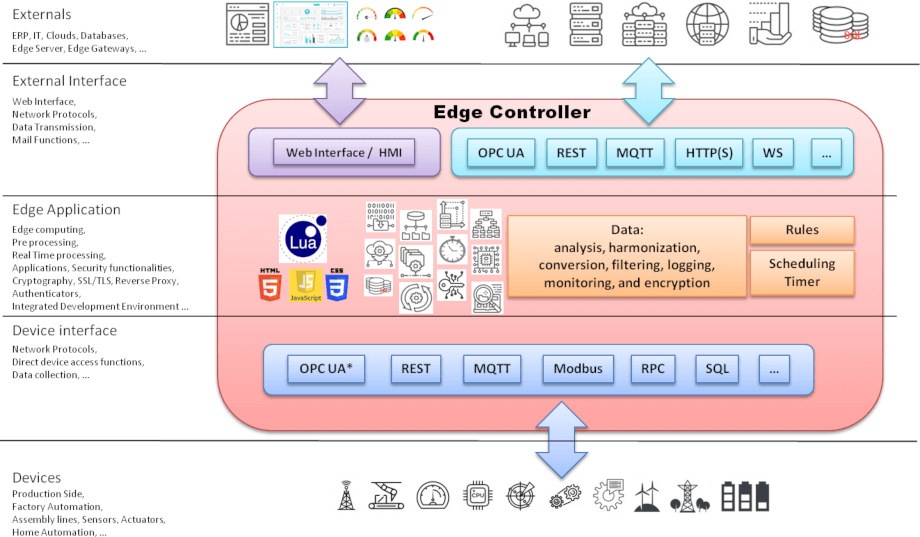When working on a project you may need an MCU or MCU board, an external display, a breadboard, and other accessories like sensors and jumper cables. It does the job, but it can be messy. Recently, we wrote about M5Stack M5StickV AI camera, but the company is better known for its ESP32 IoT development kits enabling neater project thanks to hardware that integrates MCU, I/O headers, display, and sensors into an enclosure. Their latest offerings are ATOM series toolkits that come in two versions: ATOM Lite and ATOM Matrix. Let’s have a look at both. M5Stack ATOM Lite Specifications: SiP – ESP32-PICO-D4 system-in-package with ESP32 dual-core processor with WiFi 4 and Bluetooth 5.0/5.1 Storage – 4 MB flash Crystal oscillator and passive components USB – 1x USB Type-C port Expansion 9-pin header with 6 GPIOs compatible with jumper cables 4-pin PH2.0 connector with 2x GPIO, 5V and GND Misc – […]
ESP32-S2 WiFi SoC Sells for $1, ESP32-S2-WROOM & ESP32-S2-WROVER Modules for $2 and Up
Espressif Systems ESP32-S2 was announced in May 2019, before the release of the datasheet and first internal development boards a few months later. Mass production was delayed due to COVID-19, but earlier this month we reported ESP32-S2 mass production had started and the company has a new ESP32-S2-Kaluga-1 multimedia development board in the works. So it was just a question of time before the processor, modules, and boards become available. Unexpected Maker recently got a development kit with ESP32-S2 final silicon, so I thought maybe I could find ESP32-S2 hardware on Aliexpress. I had no luck finding modules or boards at this time, but one seller is currently selling ESP32-S2 for just $1 per piece, but the trick is that you’d have to purchase 2,000. It’s also about the same price on Digikey. As a reminder, ESP32-S2 SoC is based on a single Xtensa LX7 core clocked at 240 MHz, […]
Know the Differences between Raspberry Pi, Arduino, and ESP8266/ESP32
CNXSoft: This is a guest post written in collaboration with SurfShark. When it comes to choosing a platform for STEM education or hobbyist projects, there are a number of low-cost, compact maker boards on the market. The most popular include the kid-friendly Raspberry Pi SBC that was designed with children in mind, Arduino boards for electronics projects, and more recently boards and modules based on EspressifESP8266 and ESP32 wireless SoC’s. In this post, we’ll look at the use cases and strong points for each of the boards whether you are just dabbling in the hobby of coding and DIY electronics, or you have a commercial project. Raspberry Pi The Raspberry Pi is a lineup of single-board computers (SBCs) that are from the UK and were first introduced in February 2012. These small computers were initially designed to teach students the basics of computer science, but they’ve found their way into […]
Radiona ULX3S Open Source Hardware ECP5 FPGA Development Board Launched for $99 and Up (Crowdfunding)
Last summer, we wrote about Radiona ULX3S education board combining a Lattice Semi ECP5 FPGA with an Espressif Systems ESP32 WiFi & Bluetooth WiSoC. Designed for a digital logic course at the University of Zagreb, the board is open-source hardware with KiCAD hardware design files released on GitHub, and programmable with the Arduino IDE (FPGArduino) and ProjectTrellis open-source toolchain. At the time, there was only a version based on Lattice ECP5 85F with 84K LUT, but they’ve now made versions with cheaper variants of ECP5 FPGA and launched the board on Crowd Supply. Radiona ULX3S specifications: FPGA (one of the other) Lattice ECP5 LFE5U-85F-6BG381C with 84K LUT Lattice ECP5 LFE5U-45F-6BG381C with 44K LUT Lattice ECP5 LFE5U-12F-6BG381C with 12K LUT System Memory – 32MB SDRAM @ 166 MHz Storage – 4–16MB Quad-SPI Flash for FPGA config and user data storage; MicroSD slot Audio – 3.5 mm jack with 4 contacts (analog […]
Meshtastic Mesh Networking Project Combines ESP32, LoRa and GPS Radio
Meshtastic is a project using off-the-shelf, inexpensive ESP32-based hardware with GPS & LoRa connectivity to create mesh networks helping hikers. skiers, paragliders, or people exercising other outdoor activities communicate short messages such as their GPS location. This allows each member of a private mesh network to see the location and distance of all other members and read/or any text messages sent to a group chat. No phone is required unless you have an ESP32 LoRa board without GPS in which case it would get the GPS coordinates from your phone over Bluetooth. A phone is also needed to send a message. The project currently works on three different boards TTGO T-Beam, TTGO LORA32 and Heltec LoRa 32. The T-Beam is recommended as it sells for around $26 plus shipping and features a 18650 battery holder so you can source the battery easily locally. Just make sure to purchase the right […]
$55 Watchy Smartwatch Combines ESP32 WiFi & Bluetooth SoC with E-ink Display
SQFMI has designed a (mostly) open-source hardware smartwatch based on an ESP32-S wireless module for WiFI and Bluetooth connectivity, and equipped with an E-ink display of 200×200 resolution. Watchy also comes with a BMA423 accelerometer, four buttons, a DS3231 real-time clock, and a vibration motor. The watch should last around 2 weeks on a charge. I mentioned the watch is “mostly” open source hardware because while the GERBER files, bill of materials (BoM) and the PDF schematics have been released on Github, the KiCAD schematics and PCB layout files have not so far. That still means you can understand the design, repair the design, or even make your own, but if you intended in modifying the design, you’d have some more work to do. Tom Fleet, writing for Hackster.io, does go through different sections of the schematics and explain what they do. One the software side, the watch can be […]
ESP32-S2-Kaluga-1 “Multimedia” Development Board Comes with Touchscreen Display & Camera
ESP32-S2 secure WiFi processor based on Xtensa LX7 core was first unveiled in May 2019, before the datasheet was released, and the first development boards were showcased in September. The Coronavirus outbreak slowed down progress, but the company has now announced the start of mass production for ESP32-S2 SoC, ESP32-S2-WROVER & ESP32-S2-WROOM modules, and ESP32-S2-Saola-1 development board. So that means we should soon be able to buy any of those. Apart from improved security, ESP32-S2 chip also provides a USB OTG interface and interfaces for HMI (Human Machine Interface) solutions thanks to LCD & camera interfaces. So that’s probably why the company has developed ESP-S2 Kaluga-1 board with an LCD touchscreen display, touch panel, support for camera image acquisition, audio playback, and more. We do not have the full specifications at this stage, but here are some of the highlights of the board: LCD interfaces – SPI interface or 8-/16-/24-bit […]
Barracuda App Server for ESP32 Let You Easily Develop Lua Apps via Your Web Browser
We covered Real Time Logic’s open-source lightweight Minnow Server for microcontrollers last year, and now the company has released another project: Barracuda App Server for ESP32. This project is more complex and requires an ESP32 board with PSRAM to run such as boards based on ESP32-WROVER module with 4 to 8MB PSRAM. The Barracuda App server (BAS) comes with a Lua VM, and in complement with the LSP App Manager that facilitates active development on the ESP32 by providing a web interface. The Barracuda App Server runs on top of FreeRTOS real-time operating system part of Espressif free ESP-IDF development environment. The company provides instructions to build BAS from source, as well as the LSP (Lua Server Pages ) App Manager that links to the binary-only BAS library. The Linux version of the ESP-IDF is recommended, so in Windows, you should install the “Windows Subsystem for Linux” first. The source […]


